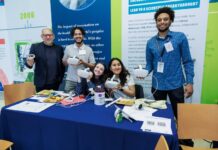The SOAP Note
By
Hillary Bekelis, AGAC-NP
The SOAP note is an acronym for Subjective, Objective, Assessment and Plan.
Subjective data is what the patient describes as the problem or reason for her visit, pertinent past medical history, current medications and review of body systems. Objective data is the physical exam, and can also include labs, radiology studies or vital signs, for example. Assessment is a brief description of the patient and problem, a list of problems and potential differential diagnoses. Plan is what you will do for the patient based on the previous three steps of information gathering and processing, such as treatment, tests and follow-ups.
This type of communication and documentation is used widely throughout health care by nurses, advanced practice providers, physicians and other support staff. This format is universal and it can be altered for each specialty that uses it. Although it is called a SOAP note and is usually used for the electronic health record, this format can also be used for communication between different specialties as well.
Speaking from the perspective of someone who has gone through both nursing and nurse practitioner programs, although the SOAP note is part of the teaching curriculum, once school is finished it is still an art that needs to be practiced to become proficient. Learning to collect data from patients, perform a comprehensive exam, and then putting that all into words can be challenging. The practice we get in school is great; however, once you make it to the workforce and have to do this for multiple patients during each shift, it can be daunting. As a newbie these SOAP notes can take a large part of your day to be sure you are not missing anything important.
One way to practice this data collection and SOAP note is by using virtual reality (VR). Whether they are students themselves or already working as nurses, residents, or doctors, VR users can leverage this technology in multiple ways to master the SOAP note and communication.
One method would be to experience firsthand an interaction between a practitioner and a patient. The learner could see how a proficient practitioner collects data, writes down notes, and then communicates to another provider what they have learned. Further, this would be beneficial to help users see the importance of body language, hear and learn what questions are asked of the patients, learn how to perform a comprehensive physical exam, and then how to write a note and communicate findings.
A second method of using this technology might be to immerse users as the provider gathering the information and have her listen to the patient’s story and then write the SOAP note based on what she learned from the patient. Think about the importance of perspective sharing in a situation like this one, to be able to learn from firsthand experiences, and just how rare it is to be able to see the world through another’s eyes.
Let’s talk briefly about the importance of consistency. Each of these high-quality training scenarios can be used an infinite number of times and on-demand, so learners can always access tools to practice and become proficient in these skills. That’s important. As nurses and advanced practice providers, we simply do not have many opportunities to practice communication or challenging situations in a safe environment.
For a group of healthcare professionals who are often thrust into new and ever-changing work environments, nurses and nurse practitioners are constantly learning on the job. It can be stressful at times and having more confidence in our skills would certainly make a world of difference.
With immersive technologies, we finally have a way to improve the quality and delivery of learning for all healthcare professionals — one experience at a time.
Posted with permission from IKONA Health


